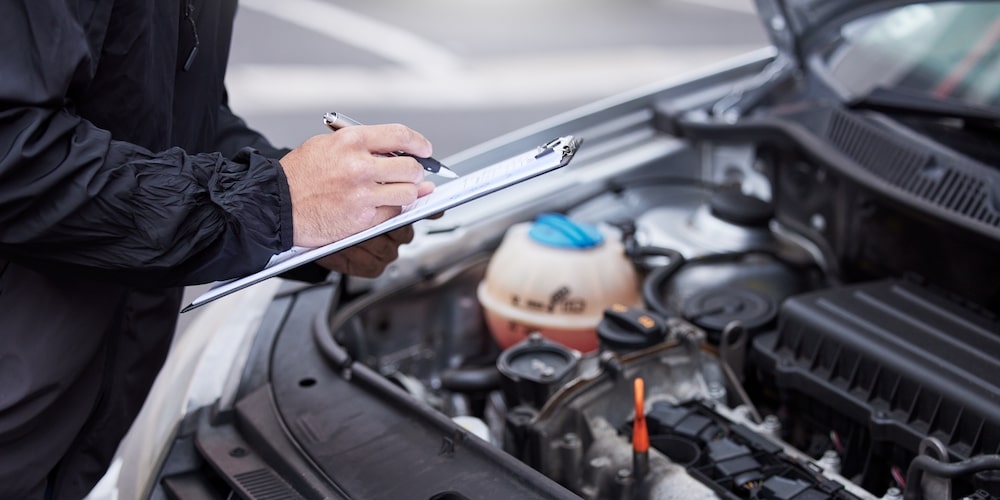After a car accident, there are numerous tasks to manage, from determining liability and collecting evidence to filing car accident claims for damages. Understanding whether your state follows a fault-based system or a no fault state structure is crucial, as it directly impacts the decisions you make regarding your case.
Is Illinois a no fault state? No—Illinois operates under a fault-based system, meaning the at-fault driver is responsible for covering the damages. This knowledge not only guides you in dealing with the insurance company but also allows you to work with your attorney to pursue the best legal strategy, ensuring you receive the maximum compensation for your losses.
No-Fault vs. Fault States
The laws and regulations regarding insurance claims can vary from one state to another. One key aspect of insurance laws is how fault is determined. In the U.S., states follow one of two insurance systems—no fault insurance system or at fault state policies. Where you live can significantly impact the car accident claims process, especially when it comes to recovering medical bills and pursuing a personal injury claim.
Is Illinois a no fault state? No—Illinois is an at fault state for car accidents, meaning liability is assigned to the party responsible for the crash. This distinction is important, as drivers in a fault state for car accidents may not carry no fault insurance or personal injury protection (PIP) by default. Instead, they must rely on liability coverage and the legal doctrine of comparative negligence laws to determine how damages are awarded. Understanding whether your state is a no fault state or a state for car accidents that relies on fault is crucial to navigating the legal and insurance process effectively.
Twelve states and Puerto Rico follow a no-fault system, according to which all parties involved in the accident file a claim with their own insurer to help pay for their injuries, regardless of who is at fault. No-fault states require citizens to have personal injury protection (PIP) coverage to provide financial protection for medical bills and other costs resulting from the accident.
A no fault state system helps streamline the process, making it simpler for car accident victims to recover compensation for their losses. Since proving fault is not required, the process becomes quicker and less complicated. However, the drawback of this system is that it may limit the options for parties seeking to sue for damages. Is Illinois a no fault state? No—Illinois is not a no fault state. In fact, Illinois is a fault-based state, meaning car accident cases are governed by liability rules, and car accidents in Illinois typically require determining who was at fault.
This fault-based system relies on liability insurance coverage, including bodily injury liability coverage, to compensate the injured party. The other driver’s auto insurance often comes into play if they are found at fault. Illinois also follows the modified comparative negligence rule, which means compensation may be reduced if a driver is partially at fault but is barred entirely if found more than 50% responsible. Understanding these rules is essential when navigating claims in a state like Illinois that is not a no fault jurisdiction.
For example, victims may not be able to recover damages for pain and suffering unless their injuries meet a certain threshold based on treatment costs. This means that individuals in no-fault states may be uncompensated for their non-economic expenses.
The majority of the US states follow an at-fault system, including the state of Illinois. Based on this system, the party responsible for causing the accident is liable for the damages. The parties involved in the accident have to establish liability by proving fault. The process of recovering compensation in an at-fault system is more complex, as victims must not only demonstrate the other party’s negligence but also negotiate with insurance companies, which may dispute the degree of fault or the amount of damages owed.
Illinois No-Fault Insurance Laws
Illinois law requires all drivers to have an auto insurance plan with a minimum liability of $50,000 for bodily injury or death for multiple people in an accident, $25,000 for bodily injury or death per person in an accident, and $20,000 for property damage per accident. While it’s the minimum liability coverage, drivers can opt for additional coverage, such as uninsured/underinsured motorist protection. As Illinois is an at-fault system, having personal injury protection is not mandatory.
Explanation of Illinois as a Fault State
If you get into an accident in Illinois, you have different options to recover compensation. You can file a claim with your own insurance company, which may seek reimbursement from the at-fault driver insurance company. This option is typically the fastest and simplest way to get compensation. However, you may be limited to your policy’s coverage limits or unable to receive compensation for certain damages, such as pain and suffering. In some cases, you may also have a rate hike in your insurance premiums, even if you’re not at fault for the accident.
Another option is to file a claim directly with the at-fault driver’s insurance company. This would not impact your insurance, and you would get full liability coverage. However, this option is more complex as you would have to prove fault.
A third option is to file a personal injury lawsuit against the at-fault party. While this option offers the potential for higher compensation, it’s also more time-consuming and there is no guarantee of winning. You can benefit from having an attorney for all three options, especially if you must prove fault or take the case to court.
Role of Comparative Negligence
As Illinois is an at-fault state, comparing negligence plays a key role in insurance claims and lawsuits. According to the comparative negligence doctrine, you can recover compensation even if you are partially at fault for the accident. However, your share of fault in the accident should be less than 51%.
All parties involved in the accident will be assessed for their respective degree or share of fault. If there is any party that is 51% or more at fault, they would be barred from recovering compensation. This law also helps encourage parties to provide evidence and arguments regarding their share of fault in the accident.
Another key component of comparative negligence systems is that the fault allocation percentage will be used to adjust the compensation. For example, if a driver was found to be 20% at fault, then they can only recover 80% of the awarded compensation.
How Is Fault Determined?
To determine fault in Illinois car accidents, insurance companies, and legal authorities will rely on various pieces of evidence. You can gather and submit evidence such as photos and videos of the crash site, police reports, medical records, and other types of evidence that support your claim.
As a first step in establishing liability, you need to prove the opposing party owed you a duty of care. This is typically not an issue as road users, including drivers, pedestrians, cyclists, and others, have a legal obligation to act in a manner that ensures the safety of others on the road.
The next step in establishing liability is proving that the other party breached their duty of care through their wrongdoing or negligence. For example, if a driver was speeding or didn’t stop at a red light, they breached their duty of care toward other road users around them.
You also need to illustrate the link between the breach of duty and your damages. This means that you need to show that the breach led directly to your accident and subsequent damages, such as property damage or injuries.
To recover compensation, you also need to provide proof of the damages you suffered. This can be done by presenting receipts and bills for your expenses, including medical treatments, vehicle repairs, and any other costs related to the accident. This is why you need to preserve records of all your expenses as you may need to submit them in your insurance claim or personal injury lawsuit.
Implications for Illinois Drivers
Illinois’ at-fault system has significant implications for how you respond to an accident and file an insurance claim. Here’s what you need to know to avoid mistakes that could jeopardize your case.
What to Do in Case of an Accident
If you get into a traffic accident in Illinois, your first step should be to ensure that everyone involved is safe. Call 911 to summon officers to the scene and request medical attention for anyone who needs it. For serious injuries, you may need to be taken to an emergency medical facility.
If you are in stable condition at the accident site, you can start gathering evidence and exchanging information with other parties involved in the accident. When the police arrive, cooperate with them to ensure they can accurately complete the incident report for the accident.
Another key step to take is to notify your insurance company about the accident. During your communication with the insurance company, avoid admitting fault or sharing unnecessary information that could jeopardize your claim.
Involve an attorney early in the process so they can help you understand your rights and responsibilities and guide you to the best legal court of action to pursue.
Steps for Filing a Claim
As Illinois is an at-fault state, the party responsible for the damages is financially liable. However, you need to file a claim to recover compensation. As mentioned earlier, you can file a claim with your own insurance company or with an at-fault driver’s insurance company as a third-party claim. The steps can differ depending on which option you choose to go for. However, both processes have similarities. For example, you must notify the insurance company about the accident and work with an insurance adjuster to negotiate a settlement.
Having an attorney on your side can help streamline the process and minimize the burden on you to gather evidence, complete and submit all the paperwork, and negotiate with the insurance company.
Common Mistakes to Avoid
If you get into an accident, you must ensure you avoid common mistakes that can weaken your case. One of the most common mistakes is to admit fault. Even if you think you’re at fault, never admit it to the insurance company, law enforcement officials, other parties involved in the accident, or anyone else who can use your statement against you.
Another common mistake you must avoid is not seeking medical attention, which is not only important for your health and safety, but also helps your case. Getting medical attention establishes a record of your injuries. You can use medical documentation to prove how you got injuries and the severity of your injuries.
Notifying the insurance provider is a key step in the aftermath of an accident. The insurance provider may be quick to offer you a settlement. However, you should be cautious of accepting quick settlement offers. These initial offers are often unreasonably low, and accepting them means giving up your right to pursue additional compensation for your full losses.
Why Choose 844SeeMike Personal Injury Lawyers
Navigating Illinois’ at-fault insurance system can often get complex and overwhelming. Allow 844SeeMike Personal Injury Lawyers to help you through the process. We have the resources, legal expertise, and experience to manage all aspects of traffic accident cases in Illinois.
Our attorneys are well-versed in Illinois car accident laws relevant to these cases, which is reflected in our impressive track record of success. All our cases get personalized attention so we can tailor our legal strategy based on the requirements of each case. To learn more about why you should choose 844SeeMike Personal Injury Lawyers, call us. We will set up an initial consultation to assess your case and guide you on how can help you get justice.







